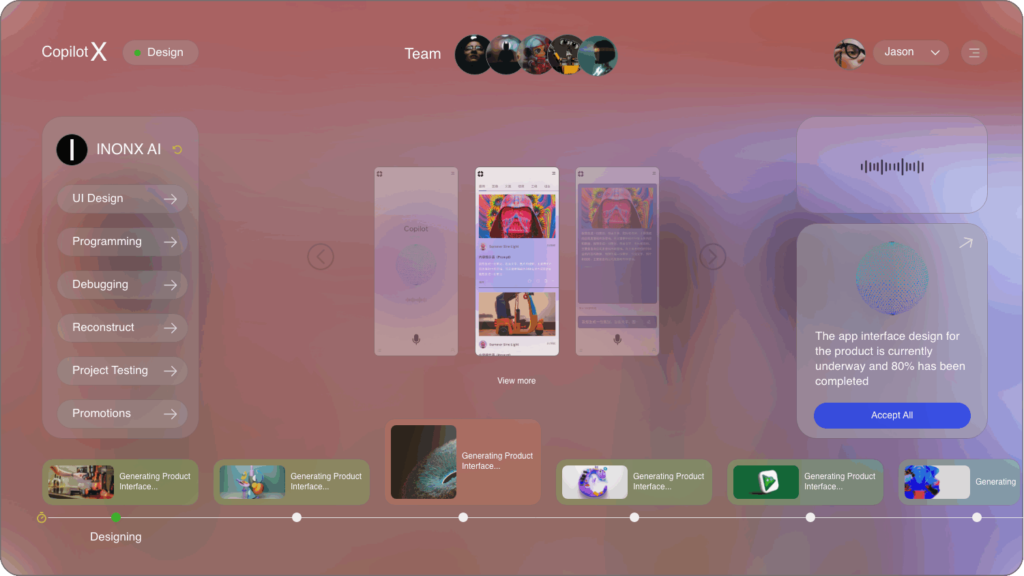Recent advancements in the field of Artificial Intelligence (AI) are shaping how humans interact with technology and transforming productivity across various sectors. From AI writing frameworks that simplify content generation to user interaction models that enhance communication between humans and machines, the latest developments in intelligent interaction are set to redefine our digital experiences. This article summarizes the most current trends and innovations driving the AI landscape in 2023.
In the last decade, the rise of AI writing frameworks has revolutionized the content creation industry. These frameworks utilize advanced natural language processing (NLP) techniques to generate text that is coherent and context-sensitive. Products like OpenAI’s GPT-4, Google’s Bard, and other proprietary models have propelled the capabilities of writing assistants to an unprecedented level. Companies are increasingly relying on AI writing frameworks to produce marketing material, news articles, and even creative storytelling.
These frameworks have improved not only in generating accurate and engaging content but also in understanding user intent. Enhanced context-awareness algorithms allow these AI systems to adapt their writing style based on the desired tone, audience, and specific guidelines provided by users. This adaptability is vital for brands aiming to maintain a consistent voice across various content streams. As organizations recognize the importance of streamlined communication, AI writing frameworks continue to gain traction in the business world.
Moreover, the ethical and responsible use of AI writing frameworks has become a significant concern. Critics argue that the unchecked use of AI for content creation could lead to misinformation and a decline in critical thinking among users. In response, developers are incorporating features that enable users to verify the accuracy of the information generated and promote transparency in AI-generated content. It is essential to strike the right balance between leveraging the efficiency of AI tools and maintaining human oversight to uphold content quality and integrity.
.
In tandem with these writing frameworks, user interaction models have witnessed a significant transformation, prioritizing seamless engagement between humans and AI systems. One of the most notable trends is the development of multimodal interfaces, which allow users to interact with AI through various methods, including text, voice, and even visual inputs. These user interaction models aim to create a more immersive experience, enabling users to communicate with AI in a way that feels natural.
For instance, advancements in speech recognition and synthesis technology have led to the emergence of voice-enabled AI assistants, such as Amazon’s Alexa and Apple’s Siri. These systems utilize sophisticated algorithms to understand speech patterns, accents, and contextual information, making user interactions smoother and more intuitive. As these voice interfaces become more prevalent, they allow for hands-free operation, especially in scenarios where users may be multitasking or require accessibility options.
Also noteworthy are the improvements in gesture-based user interactions. Innovations like eye-tracking and motion sensing enable users to control devices using gestures, creating a whole new dimension for user engagement. These user interaction models push the boundaries of traditional interfaces and offer unique avenues for communicating with AI, particularly in fields like gaming, virtual reality (VR), and augmented reality (AR).
.
AI’s ability to engage in intelligent interaction is another key facet contributing to its increasing relevance. This area emphasizes not just the delivery of accurate responses but also the ability to understand emotions, intent, and contextual nuances in conversations. Companies are fueling this wave of intelligent interaction through emotional AI, which focuses on detecting and interpreting human emotions through facial recognition, tone analysis, and linguistic cues.
Researchers have made strides in creating models capable of adjusting their responses based on emotional intelligence, thereby fostering better-supported dialogues. For example, AI-driven customer support chatbots are now programmed to identify frustrated users and respond with empathetic language. This level of sophistication in customer service can significantly enhance user satisfaction by creating a genuine connection in interactions.
In industries such as education, intelligent interaction models are being used to personalize learning experiences. AI tutors can adapt their teaching style based on students’ emotional responses and comprehension levels, allowing for a more tailored educational experience. By combining psychology principles with AI, developers can create more effective learning platforms tailored to individual needs.
.
As the AI landscape continues to evolve, the implications for businesses and society reach far beyond productivity gains. The integration of AI writing frameworks, user interaction models, and intelligent interaction presents substantial challenges related to ethics, privacy, and employment. Policymakers and industry leaders must engage in meaningful discussions regarding regulations governing the use of AI technologies, ensuring that users’ rights and experiences are protected.
In conjunction with ethical considerations, the future job market may see a transformative shift. While it is undeniable that AI tools enhance productivity, there is rising concern surrounding job displacement due to automation. Many industries are looking at how to balance AI integration while upskilling the workforce, enabling workers to adapt and thrive alongside AI technologies.
Emerging technologies such as generative AI and automated writing may also lead to new job opportunities in areas such as AI ethics compliance, AI training, and user experience design. As organizations adopt AI writing frameworks and user interaction models, they may also require dedicated teams focused on responsible AI practices and strategies for navigating the changing workforce landscape.
.
The realm of Artificial Intelligence is witnessing accelerated advancements characterized by the convergence of AI writing frameworks, user interaction models, and intelligent interaction capabilities. The rapid development of these technologies is reshaping the way individuals create, consume, and engage with content. With an increasing emphasis on the ethical use of AI, companies have begun to prioritize transparency and accountability in their implementations, ensuring a positive user experience.
Future research and innovations will likely focus on refining AI systems to enhance user interactions further while addressing ethical and societal concerns. As AI continues to advance, so does the potential for creating more empathetic, understanding, and effective technologies that can positively impact the way we communicate and interact in the digital age.
In conclusion, the trajectory of AI technology is evolving rapidly, intertwining new methodologies with human experiences. Organizations around the globe must remain vigilant and responsible in their use of AI, leveraging its potential benefits while safeguarding the values that underpin ethical interactions. As we stand on the cusp of a new technological revolution, it is essential to navigate this transformation with consciousness and foresight.
**Sources:**
1. OpenAI. (2023). GPT-4: Further improvements and capabilities.
2. Google AI Blog. (2023). Multimodal User Interfaces: Innovations in Interaction.
3. Stanford University. (2023). The Ethics of AI Writing Frameworks.
4. McKinsey & Company. (2023). AI’s Impact on the Workforce: Trends to Watch.
5. MIT Technology Review. (2023). The Future of Intelligent Interaction: Opportunities and Challenges.

























